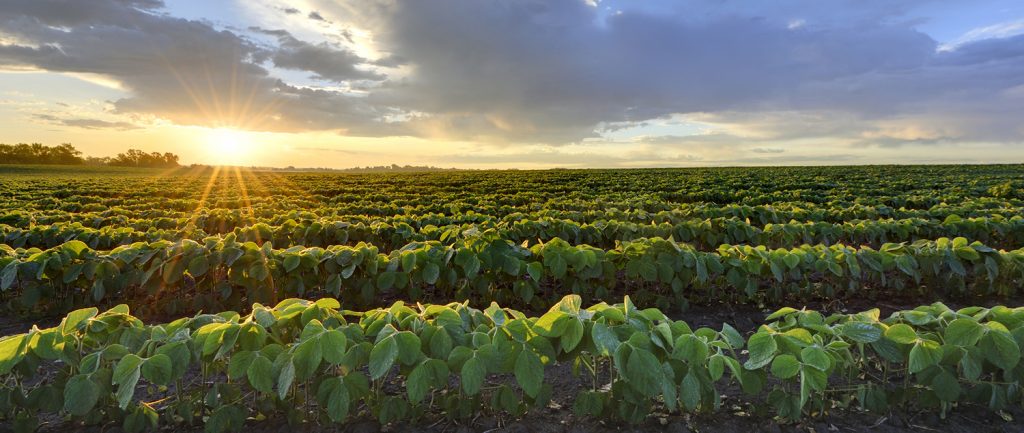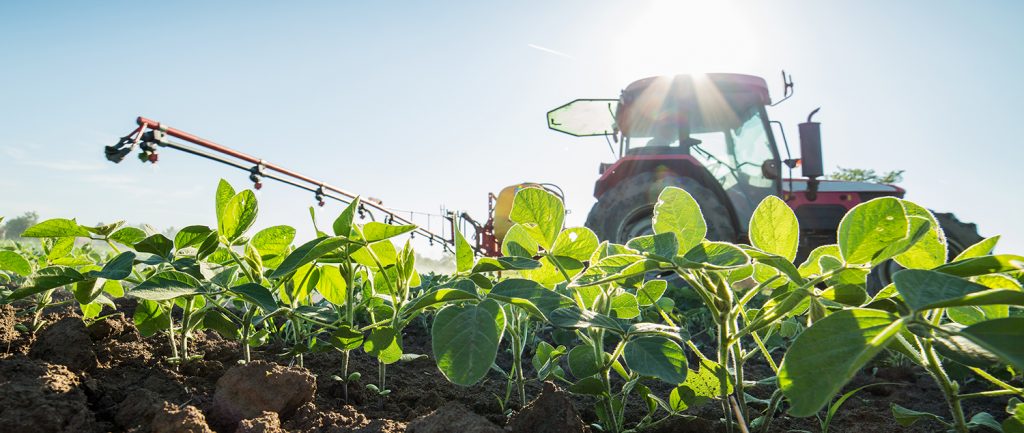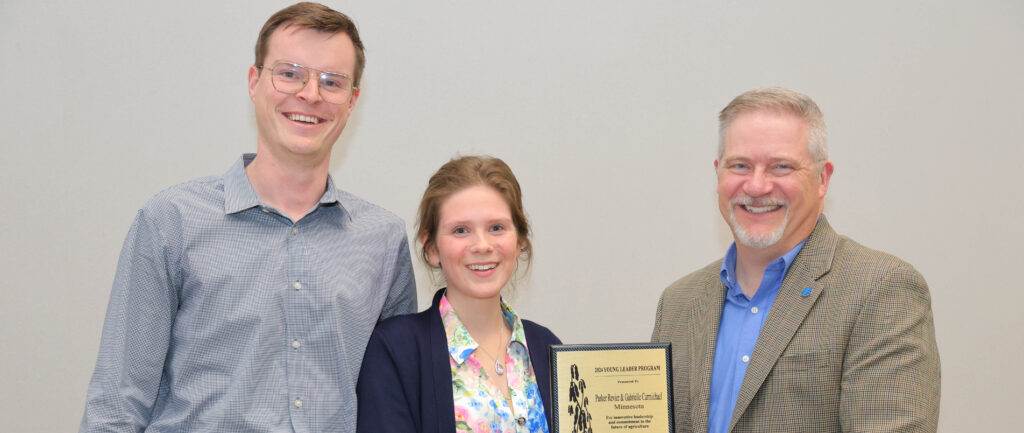Farmers adapt to health insurance crisis
This article first appeared in the January-February 2018 issue of Soybean Business. Click here to view the digital version of this issue.
When the price of Theresia Gillie’s family health insurance plan rose by 67 percent in 2016, it stopped being just another expense on the ledger. Paying for health care was fast becoming an existential threat to the farm.
A couple on her plan would pay $30,000 on premiums and deductibles before insurance started covering major claims. To put this cost in perspective, Gillie did a simple math calculation.
To pay only for a couple’s health care bill, a person would have to earn a full-time wage of at least $14.20 per hour.
Gillie, a past Minnesota Soybean Growers Association (MSGA) president, had already been asking questions before the massive 2016 rate hikes, which averaged above 50 percent in Minnesota.
“There were no answers, it was ‘This is what you get,’” said Gillie, who farms near Hallock. “It’s crippling.”

Gillie says becoming a member of MSGA is crucial for farmers in the fight against increasing health care costs.
“Health care was a pivotal issue for Minnesota farmers last election year. It clearly affected how people voted,” she says. “MSGA used all of our resources to try to lower medical costs, but we need more members to make sure the concerns of rural Minnesotans are heard loud and clear in St. Paul.”
The public reaction to this emergency has been muted because it affects only the 3 percent of Minnesotans who buy individual health insurance plans. Among those 166,000 people, Gillie’s experience is not an outlier; it’s normal.
High prices are driving more and more farm families to seek insurance through off-farm jobs, though there are other options. For those whose incomes qualify them, farm families may be eligible for state-sponsored health insurance, called MinnesotaCare, which is used by about 13 percent of Minnesotans.
Moreover, many middle-income individuals and families can qualify for state credits to buy private insurance on the marketplace, called MNsure. And there’s a new option for farmers that allows them to pool their costs and expenses together, as large businesses often do. One such health care cooperative, called 40 Square, is billing itself as a more transparent way to purchase insurance.
The cooperative has new requirements of its own, but it is noteworthy for offering options in a time when there are frustratingly few.
New option, new trade-offs
Minnesota’s health care cooperatives took more than a decade to secure the legal and regulatory permission to offer full-fledged health coverage, as two of them now do.
“It’s been a really, really long journey,” said Charlene Vrieze, project manager for 40 Square, named for a commonly sized parcel of land given to homesteading farmers.
The co-op operates under a 1974 law that sidesteps some requirements of the Affordable Care Act (ACA) while adding some new ones. For example, to join 40 Square you must be actively involved in production agriculture or provide direct services to it.
Applicants to 40 Square fill out a health questionnaire that could affect the cost of their premiums. In other words, someone with more health problems might have to pay more, which would otherwise violate ACA rules.
That questionnaire is a requirement of 40 Square’s own insurer and is meant to ensure premiums cover expenses in early years, said Terri Moxley, senior sales specialist with the company that administers the plan.
“Right now, there must be cost-sharing according to medical history,” she said.
State regulators, worried that a new health care coop could become insolvent and leave its members with unpaid bills, enacted requirements of their own. Farmers who offer employees membership in this plan must do so for three years.
Another hurdle to qualify for membership is the requirement that farmers have an employee for whom a W-2 tax form is issued. But Vrieze said that’s not as big of a problem as it may seem.
If one spouse does bookkeeping, for example, a W-2 can be issued.
“We hate to have producers jump through hoops, but it’s part of the structure we have to work under,” Vrieze said.
After all the caveats, there’s a pitch, too.
“We talk about how 40 Square is about trust, transparency and ownership,” Vrieze said.
Vrieze said she can’t promise that customers’ premiums won’t go up, but said members will at least know why.
“You’ll know how much was paid out in claims and how much you paid,” she said, which creates transparency.
Owning a piece of 40 Square means farmers can participate in decisions about the health care plan. Vrieze said 40 Square believes it can motivate its members to be better consumers of health care.
For example, the plan will offer telemedicine options, which let people contact a provider from their own home. This is convenient, and if members consistently choose less expensive services like this, the co-op as a whole will pay out less in claims, making coverage more affordable.
Customers will also be able to access information about how much procedures cost at different providers. Hospitals and outpatient surgery centers charge wildly different amounts for the same procedures — one California family was charged $24,000 for a 30-minute MRI scan in 2016. The average cost is about a tenth of that price.
The big idea: Incentivize farmers to be smarter about health care by letting them all share in the savings.
President Donald Trump recently signed an executive order to begin loosening regulations on association health plans. These groups, now limited to businesses with a “commonality of interest,” may become larger and be able to sell across state lines.
The open enrollment period for 40 Square ended on Dec. 15, so unless your situation changes (a so-called “qualifying event,” such as a marriage or divorce) you will have to wait a year to participate.
Visit https://estimate.40square.coop/estimate to see how much membership in one of 40 Square’s six plans may cost.
Know your options
One bright spot for farmers is that state assistance toward purchasing health insurance is calculated based on your income, not your assets.
“Please, at least check it out because it could save you thousands of dollars,” Gillie said. Farm families should also remember these benefits are calculated based on net income after adjustments.
Some of these adjustments may benefit you. They include deductions of part of your self-employment tax as well as the domestic production activities deduction, which allows farmers and others to deduct 9 percent of their income from qualified activities.
Thom Petersen, director of government relations for Minnesota Farmers Union, said farmers’ pride sometimes prevents them from accepting help they’re eligible for. Assistance buying on the private market is available for those earning up to 400 percent of the federal poverty level, which is $98,400 for a family of four.
“Don’t leave money on the table,” he said. “That’s the first thing that I think is really important.”
That message is vital in tough farming years. Subsidies depend in part on where you live, but a farm family earning the median income in 2016 (about $35,000) could qualify for more than $1,000 a month in premium assistance.
Petersen recommends checking with a Farmers Union insurance agent or other expert to examine whether premium assistance through MNsure or enrollment in a health co-op is the better route. Land O’Lakes recently started a sign-up period for its own co-op health plan, and more such offerings may be coming.
“It’s great to see this as an option,” he said.
Gillie herself has found health coverage through Kittson County, where she was elected as a county commissioner in 2016. Now as an elected representative, she continues the search for affordable health care.
“When does it become not feasible or sustainable for farmers to continue paying these kinds of bills? Eventually, we’ll lose young farm families.”





